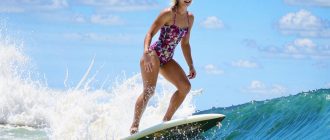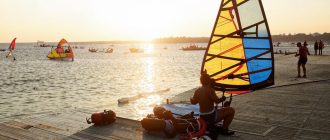
cyclist, co-owner of velobaza workshop
“A few years ago, my buddy and I decided to become randonneurs, cyclists who take part in special races known as brevets. We had to ride a distance of 200 kilometers in 12 hours”.
A brevet is an organized long-distance cycling race with a time limit and predetermined checkpoints. Standard distances are 200, 300, 400, 600, 1000 and 1200 km. They can last from one day to several days. It is not a sporting event, participants ride at their own pace.
I already had riding experience, so distances of 30-50 km did not cause any problems. At the same time, it became clear that for longer rides you still need training: both physical endurance and psychological.
Sitting in the saddle and pedaling for more than five hours in a row turned out to be quite meditative. Also of great importance is the profile of the route, i.e. how many ups and downs it has. Riding a bike on a flat surface and going uphill are very different things.
I started to prepare, gradually increasing the distances up to the cherished figure of 100 km. In winter I kept in shape by practicing on a bike trainer in virtual races.
For my first hundred kilometers, I took a route along the river, as these are the most gentle roads in Moscow. I tried at least once a month to repeat the races for 100, 120, 140 and 150 kilometers, gradually making the route more difficult. And not in vain.

On the brevet the total height gain was 1600 meters, that is, you feel as if you are climbing up a three-storey building every kilometer of the way.
For the brevet I chose a race of one of Moscow clubs affiliated with the international association of professional cyclists ACP*. I rode the distance at a relaxed pace, with three stops. It took 12 hours. More experienced participants completed the race in 5 hours and 54 minutes.
Lifehacks from my own experience:
1. Match clothing to the weather, but be sure to take a compact lightweight windbreaker, as well as sleeves and gaiters.
2. Put two flask holders on the bike. One for clean water and one for isotonics to restore salt balance.
3. For longer distances, stock up on 0.75 or 1 liter flasks in advance.
4. Take the strain off your back. Instead of a rucksack, use bags under the saddle, on the frame and on the handlebars for a repair kit, tools, energy bars and gels.

5. Make the wheels tubeless and fill them with fresh sealant before the race to avoid nails, splinters and wire punctures.
6. Ride with a partner rather than alone – this will save energy due to aerodynamics when riding “on the wheel” of the lead rider.
7. Check your bike before the race. Be sure to bring lubricant, because after 150 kilometers the chain dries out and the efficiency of the chain drive drops dramatically.
8. For long distances, ride at dawn to maximize the daylight hours.
Doctor’s opinion

leading doctor – traumatologist-orthopedist, podiatrist (specialist in foot diseases)
“Cycling is not exactly the standard load that the body gets used to. The difference is that there is a physical load, but no impact load. So the speed at which your body weight is moving doesn’t have as much of an impact on your musculoskeletal system compared to running, for example.”
It’s worth remembering the general rules for proper exercise and the specific rules specific to cycling. Despite its apparent simplicity, cycling requires proper preparation. Both warm-up and post-exercise recovery should not be neglected.

Attention, concentration and caution should be maintained throughout the entire bike ride. Especially if traveling on a roadway. Unfortunately, news of accidents involving bicyclists appear with sad regularity. Even with professional ones.
Therefore, you should not drive a vehicle if there is a feeling of fatigue, drowsiness, weakness, reduced attention. At the same time, if there is a need to take medication prescribed by a doctor, it is worth checking the precautions in the instructions.
Cycling takes a long time, during which it is recommended to replenish energy in the body with a properly selected diet (snacks and, for example, energy bars), as well as to ensure that the optimal water-electrolyte balance is maintained.

In addition to general recommendations, there are specific ones in cycling. For example, seat adjustment. Professionals recommend setting the height so that the bending angle of the knee joint at the lowest point of the foot is in the area of 25-30°.
Knowledgeable athletes calculate and set the seat using special techniques that are most conducive to the physiological position of the legs when cycling.
In conclusion, I would like to separately emphasize protection. In addition to a helmet, I recommend using all available and accessible means (kneepads, elbow pads, etc.). There is no counting the number of bone injuries and lives saved by helmets and other equipment, as, unfortunately, the opposite happens, when a helmet could have saved health, fate, life.
Follow the rules of safe cycling and do it with maximum health benefits!






